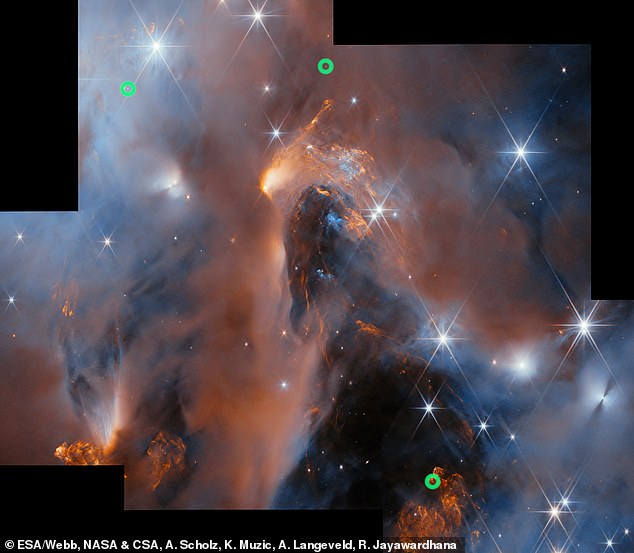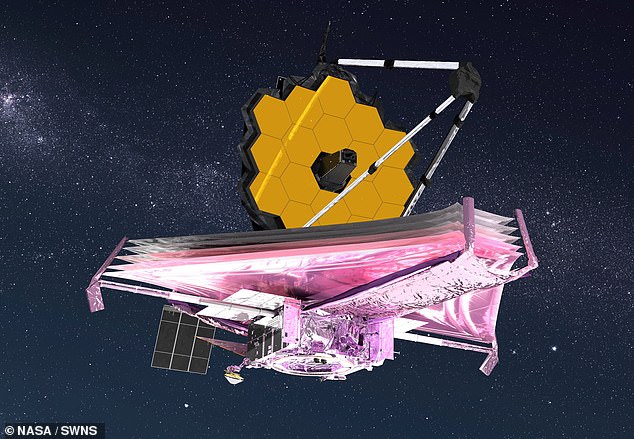James Webb captures stunning new image of planets that’ve ‘gone rogue’
Astronomers are revising their understanding of how stars and planets form after the James Webb Space Telescope discovered six new ‘dodgy’ planets.
These strange planets are free-floating objects that are not attached to a host star. In most cases, they have been violently ejected from their celestial environment by the gravity of a nearby object.
These recently discovered anomalous planets 1,000 light-years from Earth are special because they appear to have never belonged to a solar system. They formed independently of a parent star.
By observing them together with James Webb, researchers have already started to think very differently about how stars and planets are formed.
“We are exploring the limits of the star formation process,” said Adam Langeveld, an astrophysicist at Johns Hopkins University and principal investigator on the study.
A new image from JWST shows the nebula NGC1333, which contains six “unreliable” planets that could change our understanding of how stars and planets form.
Their research provided evidence for a new process of world building.
Instead of growing as planets and then being ejected from their parent star, these strange worlds began to form into stars, but failed to ignite.
Langeveld and his colleagues published their findings today in The Astronomical Journal.
Using James Webb’s Near Infrared Imager and Slitless Spectrograph (NIRISS), an instrument consisting of two main parts: cameras and spectrographs.
Cameras take images of space and spectrographs spread light into a spectrum, allowing researchers to measure every wavelength.
Thanks to NIRISS, the research team was able to perform the deepest ever study of the young nebula NGC1333, a star-forming cloud in the constellation Perseus.
Webb peered through the gas and dust and captured a remarkably detailed image of the inner nebula, which sparkled with young stars.
The researchers measured the infrared light spectrum of every object Webb observed in NGC1333 and discovered that several strange worlds lurked within.
Webb’s observations revealed that these six elusive planets are gas giants about five to ten times more massive than Jupiter.
But Webb’s observations suggest they didn’t start out as planets.
They actually formed through a process that usually creates stars and brown dwarfs, objects that lie on the border between stars and planets but never become luminous.
This led the research team to ask an important question: Could an object resembling a young Jupiter become a star under the right conditions?

The green circles in this image mark three of the rogue worlds discovered by JWST, hidden in NGC1333.

JWST’s observations have complicated the classification of stars and planets, because elusive planets resemble gas giants and brown dwarfs but don’t quite fit into either category.
“This is an important context for understanding both the formation of stars and planets,” said Langeveld.
The most enigmatic of these six rogue worlds is the lightest object with a “dust disk” yet found.
A dust disk, also called a circumstellar disk, is a circular cloud of gas and dust that orbits a newly formed star.
This object has a mass approximately equal to five Jupiters (or 1600 Earths). The presence of the disk suggests that the object formed as a star.
“This raises a question that challenges theories of star formation: how can an object with a mass only a few times that of Jupiter form directly from a shrinking cloud of gas and dust?” Langeveld told DailyMail.com in an email.
Furthermore, these findings suggest that ‘mini-planets’ and planetary systems may be forming in the disk of this unusual planet, as planets are known to form in circumstellar disks.
“If so, it would likely resemble Jupiter or Saturn (due to the mass of the object), for example with moons and/or rings, rather than a system analogous to our solar system with larger planets,” Langeveld said.
“This whole area is uncharted territory,” he added.
“We have never found ‘moons’ or companion bodies outside our solar system around such low-mass objects before. That is why it is important to do further research in the future.”
These new findings complicate the task of classifying stars and planets, as anomalous world masses overlap with gas giants and brown dwarfs. However, the process of their formation sets them apart.
“Our observations confirm that nature produces planetary masses in at least two different ways,” lead author Ray Jayawardhana, an astrophysicist and provost at Johns Hopkins University, said in the press release.
The first is “by the contraction of a cloud of gas and dust, the way stars form,” and the second is “in disks of gas and dust around young stars, like Jupiter did in our own solar system.”
The research team plans to further investigate these unusual objects and compare them to more massive brown dwarfs and gas giants.
“A more complete picture of the birth of stars and planets would help us understand how our own solar system formed and how our planetary system relates to the broader cosmic context,” Jayawardhana told DailyMail.com in an email.
